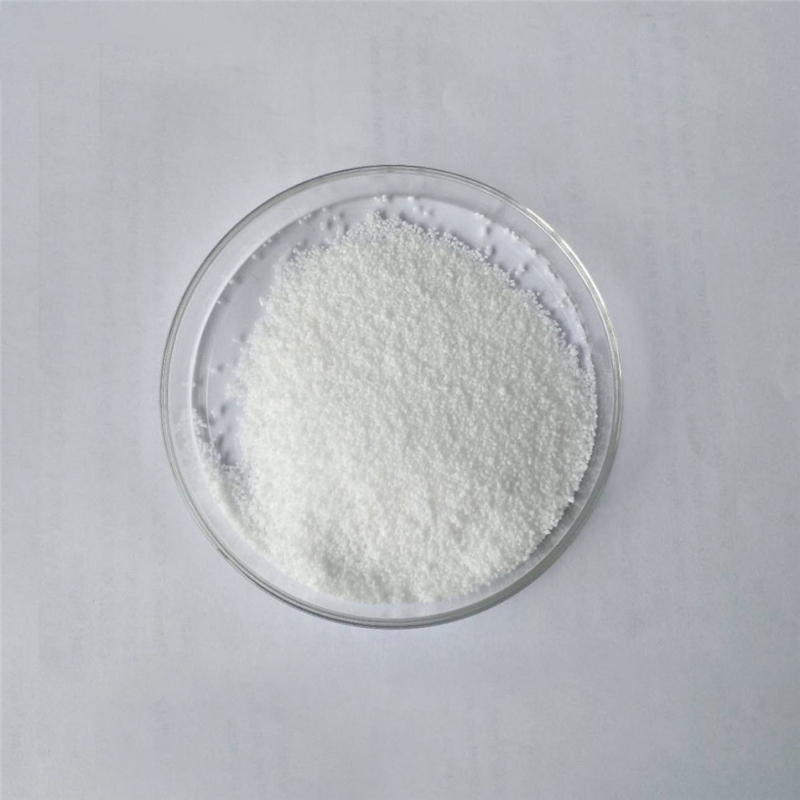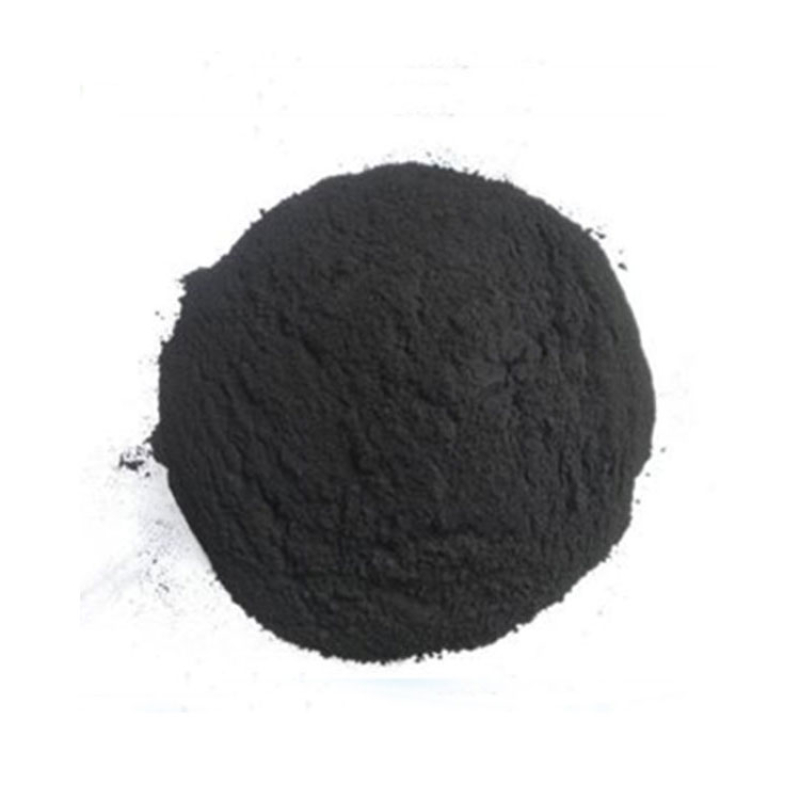Products Description of Dioctyl sebacate CAS#122-62-3Dioctyl sebacate, also known as bis-2-ethylhexyl sebacate, referred to as DOS, is made by esterification of sebacic acid and 2-ethylhexanol. It is suitable for polyvinyl chloride, vinyl chloride copolymers, nitrocellulose, ethyl cellulose and synthetic rubber. It has high plasticizing efficiency and low volatility. It has excellent cold resistance, good heat resistance, light resistance and electrical insulation. It also has good lubricity when heated, making the product look good and feel good.
Contact Now
Products Description of N,N-Di-Sec-Butyl-P-Phenylenediamine CAS#101-96-2N,N-di-sec-butyl-p-phenylenediamine is a brown-red liquid. It is an amine antioxidant with excellent properties. It is especially suitable for use as an additive for cracking or thermal cracking gasoline (gasoline with high olefin content). It can effectively prevent olefin oxidation. Produce gel.
Contact Now
Products Description of Glyceryl monostearate CAS#31566-31-1White or light yellow waxy solid, odorless and tasteless. Relative density 0.97, melting point 56-58°C. Soluble in hot organic solvents such as ethanol, benzene, acetone, mineral oil, fatty oil, etc., insoluble in water, but can be dispersed in hot water to form an emulsion under strong stirring. HLB value 3.8.
Contact Now
Products Description of Prussian Blue CAS#14038-43-8Prussian Blue, also known as Berlin Blue, Gong Blue, Iron Blue, Milori Blue, Chinese Blue, Milori Blue, Hualan. It is an ancient blue dye that can be used for glazing and oil painting dyes. Prussian blue brings us a breathtaking beauty. It is not only a unique color, but also reflects a precipitated texture.Prussian blue is a blue dye discovered in 1706. Its structure is composed of Fe (II) and Fe (III) coordinated with cyano (-CN-).
Contact Now
Monoethanolamine CAS# 141-43-5Ethanolamine is a variety of viscous hygroscopic amino alcohol incorporates each amine and alcohol chemical groups. It is extensively dispensed interior the physique and is a thing of lecithin. It has many sorts of industrial applications. For example, it can be used in the manufacturing of agricultural chemical compounds such as ammonia as properly as the manufacturing of prescription drugs and detergents. It can additionally be used as a surfactant, fluorimetric reagent and casting off agent of CO2 and H2S.
Contact Now
Products Description of Trimethyl orthopropionate CAS#24823-81-2Trimethyl orthopropionate is a chemical substance.Trimethyl orthopropionate Chemical PropertiesBoiling point 121-122 °C (lit.)density 0.944 g/mL at 20 °C (lit.)refractive index 1.397-1.399Fp 19 °Cstorage temp. Flammables areasolubility soluble in Chloroformform Liquidcolor Clear colorlessBRN 1736043CAS DataBase Reference24823-81-2(CAS DataBase Reference)NIST Chemistry ReferencePropane, 1,1,1-trimethoxy-(24823-81-2)Safety InformationHazard Codes Xi-F,Xi,FRisk Statements 36
Contact Now
Products Description of Potassium carbonate CAS#584-08-7Potassium carbonate (chemical formula: K2CO3, English Potassium carbonate), also known as potash, has the appearance of colorless crystals or white particles, is very soluble in water, and its solution is strongly alkaline. When its saturated aqueous solution is cooled, a glassy monoclinic hydrate 2K2CO3·3H2O crystal is separated, with a density of 2.043, and loses crystal water at 100°C. It is insoluble in ethanol, acetone and ether.
Contact Now
Products Description of Bitertanol CAS#55179-31-2The pure product is a colorless crystalline solid. m.p. 125~129℃ (diastereomer A is 136.7℃, B is 145.2℃, and the low eutectic of A and B is 118℃). The vapor pressure at 20℃ is <1.0×10-3Pa [A is 3.8×10-3Pa, B is 3.2×10-3Pa (100℃)]. Solubility at 20℃: dichloromethane 100-200g/L (A is 200-500g/L, B is 50-100g/L), isopropanol 30-100g/L [20-50g (A or B)/L], toluene 10-30g/L [A is 10-20g/L, B is 1-2g/L], n-hexane 1-10g/L [≤10g (A or B)/L], water 5mg/L [2.9mg (A)/L, 1.6mg (B)/L]. Partition coefficient 126000 (A), 25000 (B).
Contact Now
Potassium clavulanate CAS# 61177-45-5Product Overview:Potassium Clavulanate, also known as CLAVULANIC ACID POTASSIUM SALT with the CAS#61177-45-5, is a potent β-lactamase inhibitor that is revolutionizing the way we combat bacterial infections in the industrial pharmaceutical sector. As a key component in the synthesis of advanced antibiotics, our Cellulose Clavulanate is designed to meet the rigorous demands of modern manufacturing processes.Market Relevance:In the competitive landscape of the pharmaceutical industry, the need for effective antibacterial agents is paramount.
Contact Now
Products Description of Decyl glucoside CAS#68515-73-1Decyl glucoside is a new type of nonionic surfactant alkyl polyglycoside (APG).
Contact Now
Products Description of Clotrimazole CAS#23593-75-1Clotrimazole is a synthetic azole antifungal drug that has inhibitory effects on a variety of pathogenic fungi and can also have a bactericidal effect at high concentrations.
Contact Now
Products Description of Methanesulfonic acid CAS#75-75-2Methanesulfonic acid is an organic compound with the chemical formula CH4O3S. It is soluble in water, alcohol and ether, insoluble in alkanes, benzene, toluene, etc., does not decompose in boiling water and hot alkali, and is strongly corrosive to metals such as iron, copper and lead.
Contact Now
Products Description of Dichloromethane CAS#75-09-2Dichloromethane is a compound in which two hydrogen atoms in the methane molecule are replaced by chlorine. The molecular formula is CH2Cl2. It is a colorless, transparent, heavier than water, volatile liquid with an ether-like smell and sweet taste.
Contact Now
Products Description of 3-Hydroxy-1-AdaMantane Carboxylic Acid CAS#42711-75-13-Hydroxyadamantane can be used to synthesize potent pyridineamide/sulfonamide inhibitors of 11β-HSD-1, which can be used to treat ulcers or hormone therapy related to cortisol3-Hydroxy-1-AdaMantane Carboxylic Acid Chemical PropertiesMelting point 203 °CBoiling point 357.2±25.0 °C(Predicted)density 1.419±0.06 g/cm3(Predicted)storage temp. Sealed in dry,Room Temperaturesolubility DMSO (Slightly), Methanol (Slightly)form Solidpka4.60±0.40(Predicted)color Off-WhiteInChIInChI=1S/C11
Contact Now
Products Description of Adenosine5'-(tetrahydrogen triphosphate), disodiuM salt, trihydrate (9CI) CAS#51963-61-2 This product is white crystal or off-white powder, odorless, slightly sour, and hygroscopic. It is easily soluble in water and very slightly soluble in ethanol, ether, chloroform and benzene. It is relatively stable in alkaline solutions and easily decomposed in acidic and neutral solutions.
Contact Now
Products Description of Zirconium Silicate CAS#10101-52-7Zirconium silicate is a high-quality, low-cost emulsifier that is widely used in various building ceramics, sanitary ceramics, daily-use ceramics, primary ceramics, etc. It has a wide range of applications and a large amount of applications. Zirconium silicate is also further used in the production of color picture tubes in the television industry, emulsified glass in the glass industry, and enamel glazes.
Contact Now
Products Description of ChlorphenesinCAS#104-29-0Chlorphenesin is a preservative widely used in cosmetics and is compatible with most preservatives (including potassium sorbate, sodium benzoate, methylisothiazolinone). It is white crystals, usually with a weak characteristic odor. Melting point 77.0-80.5℃. Slightly soluble in water (about 0.5%). Solubility in 95% ethanol is 5%. Soluble in ethers. Slightly soluble in fixed oils, insoluble in white mineral oil. Microbial control performance: can provide improved broad-spectrum antibacterial activity.
Contact Now
Potassium Formate CAS#590-29-4Potassium formate is a useful chemical compound in the production of potassium metal and in the oil and gas industry, often in aqueous solution (alone, or mixed with cesium formate), to yield a high-density, environmentally-friendly brine that can be used a a heat transfer fluid.
Contact Now
Products Description of ZIRCONIUM(IV) HYDROGENPHOSPHATECAS#13772-29-7Zirconium phosphate (ZrP), also known as zirconium hydrogen phosphate, has a chemical formula of Zr(HPO₄)₂.2H₂O and is a fine phosphorus chemical product. Zirconium phosphate has a white powder appearance, an acidic pH value, stable chemical properties, is insoluble in water, insoluble in general organic solvents, has good acid and alkali resistance, has high thermal stability and mechanical strength, and is widely used as a solid lubricant in self-lubricating composite materials.
Contact Now
Products Description of POTASSIUM TITANATE CAS#12030-97-6Potassium titanate is a white solid with a relative density of 3.1 and a melting point of 1515°C.
Contact Now
Products Description of Potassium phosphate CAS#778-53-2Azodicarbonamide is a synthetic chemical that exists at ambient temperature as a yellow-orange crystalline solid. Azodicarbonamide is mainly used as a blowing agent in the rubber and plastics industries in the expansion of a wide range of polymers, including polyvinyl chloride, polyolefins, and natural/synthetic rubbers.
Contact Now
Products Description of cocoyl glutamic acid CAS#210357-12-3Colorless transparent liquidFactory and Equipment ShowFast delivery timeInventory 2-3 working days New production 7-10 working days
Contact Now
Products Description of Trimethylsioxysilicate CAS#56275-01-5White powderTrimethylsioxysilicate Chemical PropertiesFp 4°C (39°F)EPA Substance Registry SystemSilicic acid, trimethylsilyl ester (56275-01-5)Safety InformationRisk Statements 11Safety Statements 24/25RIDADR 1993TSCA YesFactory and Equipment ShowFast delivery timeInventory 2-3 working days New production 7-10 working days
Contact Now
Products Description of Palladium CAS#7440-05-3Palladium is a transition element of Group III (nickel group) and light platinum metal in the periodic table. It is a silvery-white metal that is moderately hard, moderately forgeable, and ductile. Palladium is an intermediate element in Group 10 of transition elements (periods 4, 5, and 6). Many of its properties are similar to those of nickel, which is above it, and platinum, which is below it, in this group. Palladium is a soft, silvery-white metal that has chemical and physical properties very similar to those of platinum.
Contact Now

































